Our riad was a cosmopolitan place, home to holidaying Brits and Spaniards, Germans and Americans. So breakfast was taken to a background hum of languages and accents, all of which could also be heard on the vibrant streets of Marrakech.
The city has become a popular holiday destination in North Africa, reasonably safe and with enough in the way of attractions to occupy visitors for a few days. Our last couple of days in town saw us ticking off those sights…
The royal Saadian Tombs are high up on the list of things to see and a comfortable walk from our base. It was early as we headed out and traders in the Mellah Market were gearing up for another noisy day of trade.
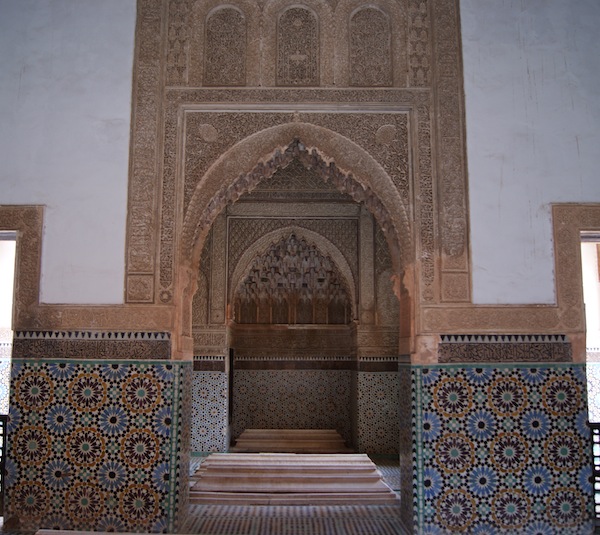
Stalls were already piled with goods and produce, carts pulled by distressed and flea-bitten mules lugged their loads down streets clogged with the usual chaotic mix of cyclists, pedestrians, cars and motorcyclists. Two men, one young, one old, were having a punch-up over something or other. Elsewhere, traders tended their shopfronts, showcasing herbs and spices, fruit, veg and household wares. On spare patches of ground, itinerant traders laid their goods out on sheets – everything from fake Ray Bans to tins of shoe polish. The air was filled with smells – some pleasant, some not, and there was filth everywhere.
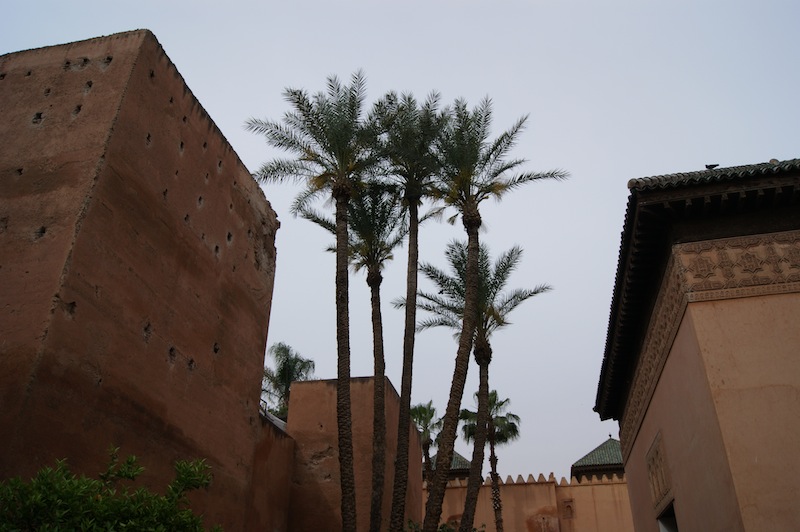
We arrived at the grand Kasbah Mosque, site of the tombs, in a much rejuvenated district, paid our 10 dirhams to enter the tombs and filed down an extremely narrow passageway between the buildings that had served to keep the treasures hidden for many years. I wondered how the growing army of obese folk in the world would get through…
The 16th century royal tombs of the great and good were only rediscovered during an aerial survey of the city in the early years of the 20th century. Huge crowds filled the courtyard, which featured some ornately carved mausoleums and many colourful, tiled tombs lying open to the elements.
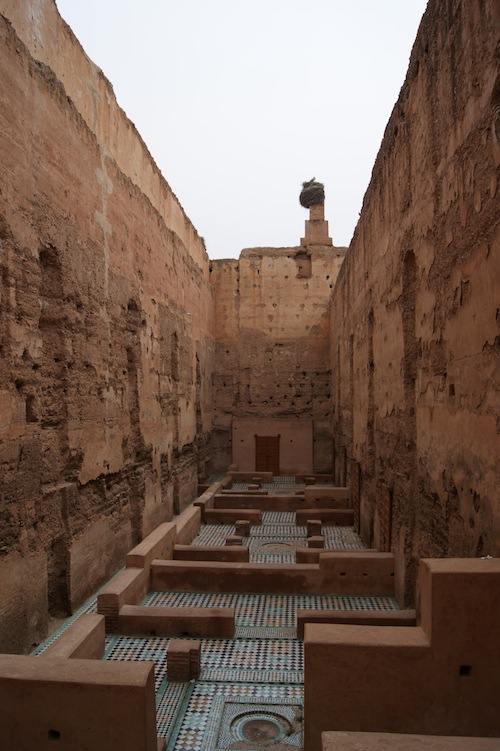
The queue for the highlight, the Chamber of the Three Niches, was huge so we decided to return later in the day. But was it worth the wait and the crush? While the chamber certainly showcased the incredible talents of the craftsmen who built it, with stunning carving guarding the tombs, I wouldn’t rush back. Many visitors, including Graham, seemed more interested in the kittens scampering around the grounds.
Just down the road is the El Badi Palace, a triumph of a ruin from the 16th century. Walking through the gate, we emerged into a vast courtyard with the remains of sunken gardens and pools. It wasn’t particularly attractive, and it took a feat of the imagination to picture the palace as it would’ve been in its glory days, but it was immense.
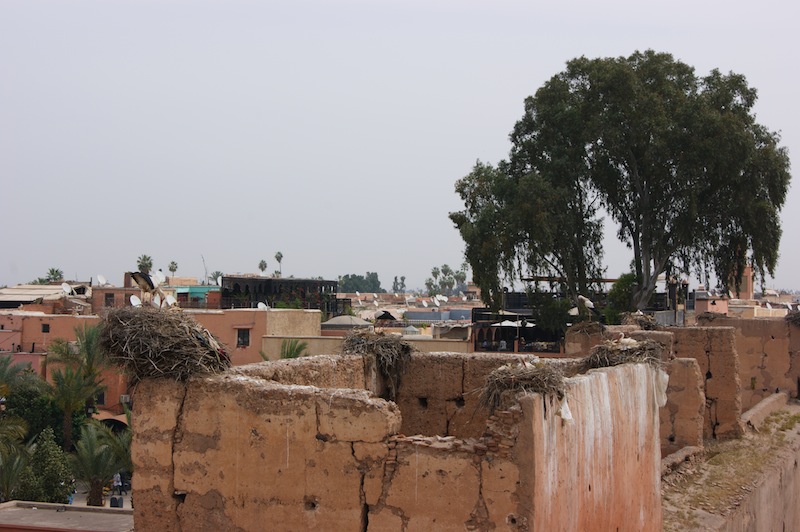
The highlights included an historic Minbar, or prayer pulpit, taken from the Koutoubia Mosque in the early 1960s. Amost 1,000 years old, the skills of the craftsmen who built it were still clearly in evidence, although a scowling old man on the door grumpily announced that photos were forbidden. We also enjoyed an exhibition of photos by Don McCullin of the Magnum Agency and the views of the city from a terrace on the battlements.
We ate lunch in the Place des Ferblantiers, aggressively waitered by men with all the customer service skills of Nazi stormtroopers. I had sausages and couscous, although the waiter tried to get me to purchase everything else on the menu at various points during our visit. My cold meant that, for better or worse, I could barely taste anything. Entertainment was unwittingly provided by a European family who were clearly obsessed with hygiene and the urgent need to put their trainers in the washing machine on their return home. It made me wonder why they bothered coming to a place like Marrakech in the first place.
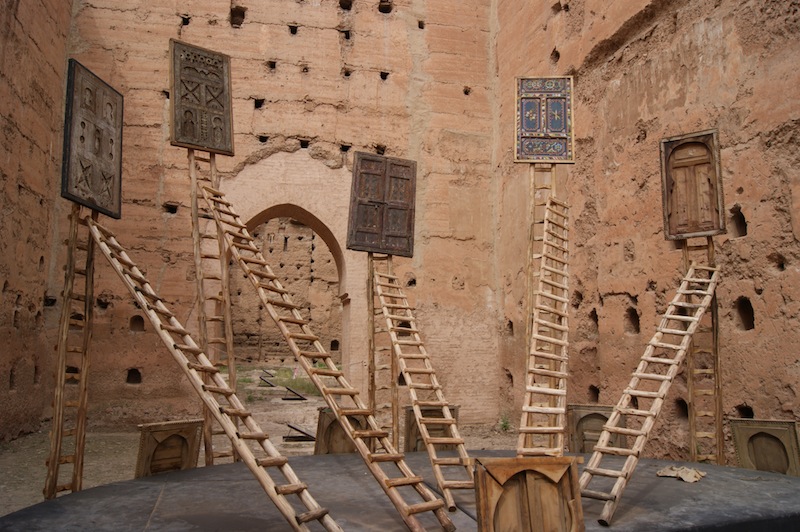
We walked back to the riad to read by the pool and with temperatures cooler, fewer people were around. In the evening, we decided to try fine dining at the Riad Monceau. This beautiful building offered sumptuous decoration, uncomfortably low chairs and genuflecting if infrequent waiters. The tasting menu for 450 Dirhams (with wine extra) was easily the most expensive meal of the week, but with the familiar tajine at its heart. Afterwards we had a few more beers at the Kosybar (a regular haunt during our stay), which was quiet for a Saturday night thanks to the lusty winds buffeting the open-air top floor bar. Not that that put me off…
Much of our last day in town was spent in the soups and at the Maison de Photographie, north of the Djemaa el-Fna square.
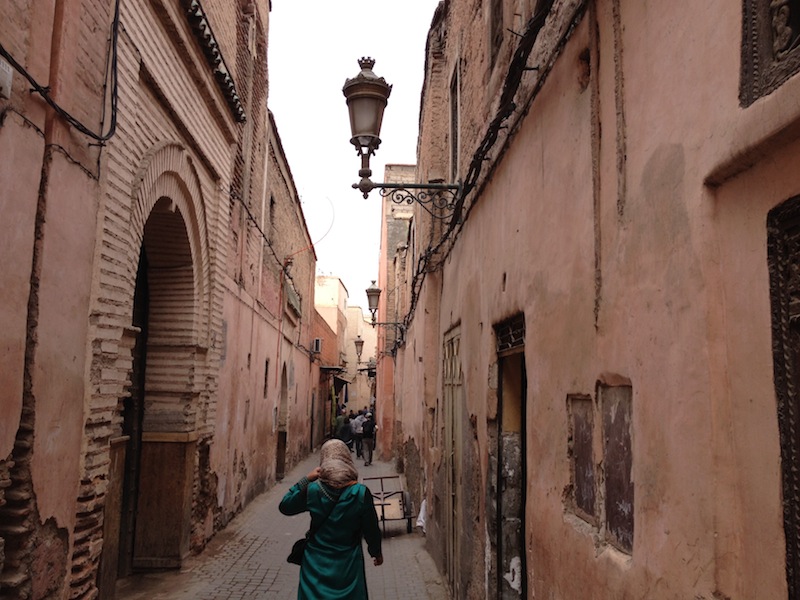
The gallery is housed in a beautifully restored travellers’ inn or funduq and boasts a collection of photos of Morocco dating from the 19th century through to the mid-20th, and very good they are too. Some of the images feature life in Marrakech and the country’s other notable cities, such as Fez and Rabat, others focus on remote villages and the glorious Atlas Mountains.
What struck me is how little Marrakech has changed over the years. Yes, there are more buildings today, more concessions to modernity and more tourists, but its soul remains intact. That soul is represented by the medina, where people still make their living in the thriving souqs, manufacturing and selling traditional wares. The medina’s maze of narrow alleys remains much as it was when those photos were taken more than 100 years ago. There’s still great poverty and too many beggars, and despite the huge number of motorbikes, animals still play a crucial role in everyday life. There’s too much filth and a collection of obnoxious odours to turn the stomach, although my cold helped keep my appreciation of them to a minimum.

It was all hugely entertaining and, in the medina at least, a glorious relief to walk down streets without seeing branches of Gap, M&S and Starbucks..
Away from the photos in the gallery, we stopped at their cafe on the roof terrace and drank in the great views of the pink city, its flat roofs crowned by a forest of satellite dishes. But that was it. The sightseeing was over. We said goodbye to the wonderful staff at our riad, the Ksar Anika, strapped ourselves into one of the city’s dilapidated taxis and drove out to the airport. Huge, black storms circled the airfield as we waited for our flight, bringing the first proper rain of our stay.
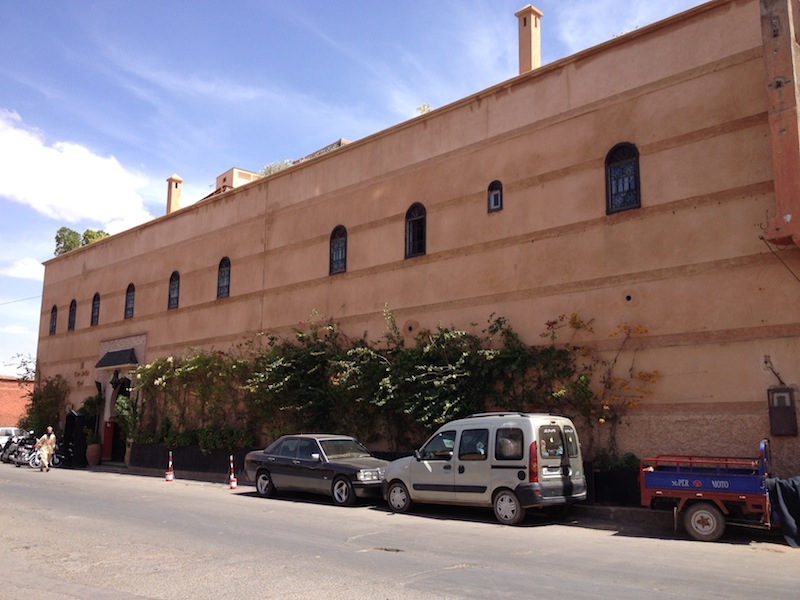
Marrakech had certainly been an experience. Despite my fears, it had actually been a remarkably friendly place and while it may never win any beauty parades, it proved to be a city as theatre. And there aren’t many like it.

